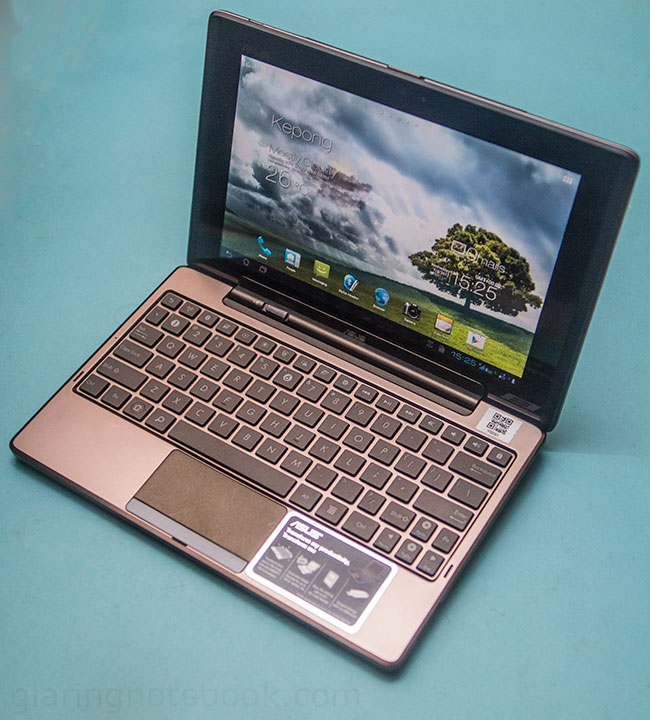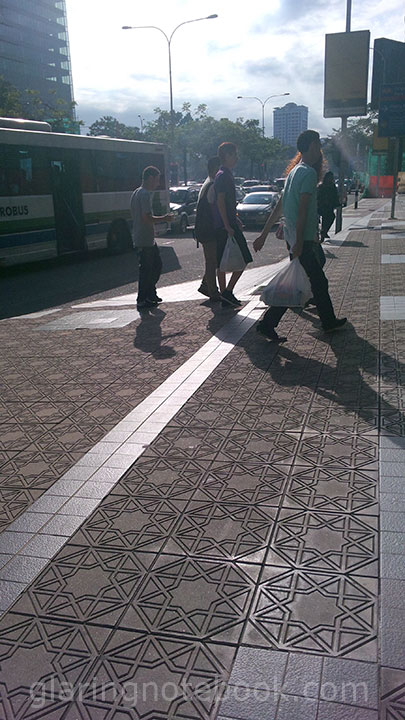My HTC Desire had just turned 2 years old. It was still going strong, with Sandvold‘s Android 4.0.4 Ice Cream Sandwich based on CyanogenMod 9. Although I had in my possession a Samsung Galaxy Nexus for a while (in my line of work as an Android app developer) I never quite felt the need to upgrade, as the 1 Ghz Snapdragon was still very competent.
The only missing things were:
– a front-facing camera
– NFC support
– a gyroscope
That, and tiny internal storage space meant gymnastics with partitions especially with apps that would not move to SD card. Plus the few ROMs I tried didn’t quite like my partitions. But anyway!
At the Computex 2011, one amazing product was showcased – the Asus Padfone!
The Internet was abuzz with this, and many were hoping that it would be able to connect to a keyboard dock, like how the Asus Eee Pad Transformer does.
Then Jonney Shih, chairman of Asus, launched it officially at the Mobile World Congress 2012:
Pleasantly, they added the keyboard, and added one more amazing surprise – a capacitive stylus that doubles as a Bluetooth headset! I cannot tell you how cool that is.
And so, here is the final ad:
https://www.youtube.com/watch?v=Rrh_EwFaZ7I
When there was wind of it coming to Malaysia, I pre-ordered it. Unfortunately, I only have what was announced in 2011 – the Padfone and Padfone Station.
Wait, what is a Padfone Station?
Terminology
Padfone – the phone itself
Padfone Station – the tablet
Padfone Station Dock – the keyboard
Stylus Headset – the capacitive stylus that doubles as a Bluetooth headset

The Padfone box has earphones, a wall plug, a Micro USB cable and of course the phone.

The Padfone Station box has a pleasant surprise – when you open it, the first thing you see is a sleeve! It is not a separate item.

As you remove the sleeve and Padfone Station, you can see a pretty box.

The Padfone is on the right, sporting a 4.3″ Super AMOLED screen with qHD 960×540 pixel resolution. The CPU is a Qualcomm 8260A Dual-Core 1.5Ghz and despite there being quad-core phones out there, this phone is very much responsive. It is also surprisingly light, at 129 grams, and yet it has a very premium feel. If you ever wondered what a iPhone 4s would feel like if it was lighter, this would be it! (The difference is only 8 grams, but I put it down to density and weight distribution.)
On the left is my HTC Desire, the original 3.7″ 800×480 AMOLED version.
The Padfone is codenamed A66, fitting since the original Asus Garmin phones were called the A10 and A50.

Thickness and size from the back – the Padfone being on the right, the HTC Desire on the left.

The key selling point is that the Padfone fits into the back of the Padfone Station, and becomes a tablet. However, the tablet cannot operate without the phone inside – it is just a dumb screen.
By putting the phone in the tablet, all your phone’s apps and data are there in the tablet!
Some people would prefer to have a separate tablet so that two people could use it at the same time. This is not for them!
Some people want to use a phone and a tablet, all to themselves. This lets you play Angry Birds on your phone while sitting in the toilet, and continue at home on your tablet. Since I had access to tablets, there are some games I would play on the tablet, but not on the phone, or vice versa, simply because my game progress would be on the other device.
Now with the Padfone, I would not have such a problem at all!

The latch then locks the phone in place. When you open the latch, you can pull down on the door to nudge the phone out slightly.

The slot from the top. From the left is a Micro HDMI Type D port, a Micro USB port, a little button (pressing it will trigger a short vibration because it thinks the Padfone is inserted), and 3 pins (I think they are for a display dock, but I don’t understand why.) Also note the 2 holes for the camera and LED flash!

From the back, you can tell if the Padfone is inside – you can see the camera and LED flash!
The LED flash is blindingly bright – much brighter than my HTC Desire’s. Another very cool thing is that the LED flash can be used in the tablet, making it one of the very few tablets with a LED flash!

There is a power button on the left.

The bottom. This is compatible with the Asus Eee Pad Transformer TF101 keyboard dock.

The volume buttons and the earphone/handsfree jack. Also note the large speaker – the Padfone Station can play music clearly, at an uncomfortably loud volume! (Apparently, the Asus engineers spent a lot of time on this.) You’d want to dial it down.
Oh yes, you can receive calls when the phone is plugged into the tablet, in many ways:
1) pull out phone and answer call
2) answer call on tablet loudspeaker (be warned that the tablet’s maximum volume is surprisingly loud, more than most laptops)
3) answer call on tablet loudspeaker, then pull out phone halfway (the conversation will not be cut off!)
4) answer using the stylus headset
5) answer using any Bluetooth headset
6) answer using the handsfree kit that comes with the phone

And finally, from the back. The texture is a very luxurious, smooth metal with a bit of rubber, with a contour that is nice to hold.

The sleeve folds under a little flap to put it at an angle that is suitable for reading…

…and you can move the tablet so it goes into an angle that is suitable for typing.
Of course, with the keyboard dock, you can adjust it at any angle.

So here it is, with my office’s Asus Eee Pad Transformer TF101 keyboard dock. It doesn’t lock all the way in, though, as you can see from the latch, and if you tilt it too far back, the whole thing will fall backwards!
That is why I have also pre-ordered the Padfone Station Dock – it is very similiar to this dock, except that you cannot tilt it so far back.

Plus, it would probably match better, too!

The sleeve also has a holder for the stylus headset. Oh, I can’t wait!

You can also operate the camera with the latch open – this is what you’d see.
The 8 megapixel camera is pretty good, with a F2.2 lens and autofocus.

Dynamic range test. Not bad! No EV compensation was used.

100% crop from a 6 megapixel 16:9 picture.

This is what it looks like when the latch is open. Gotta love how close it can focus!

Another close shot, this time at 4mm F2.2 1/15s ISO800. I set the ISO to 800, the highest it would go. The angle of view looks quite like a 28mm on full-frame.

The moment I turned it on at the shop, it asked to update the firmware. This is the latest over-the-air update. (Note that this is with the TF101 keyboard dock, not the Padfone Station Dock, so ignore the Padfone Station Dock version.)
I then rooted it with the instructions here:
http://forum.xda-developers.com/showthread.php?t=1706588
I then installed Titanium Backup, and transplanted the MicroSD card from my HTC Desire and restored my apps and app data. So I have all my 3-star scores, unlocked eggs and 100% dragons in all 4 Angry Birds games!
I have not installed any custom ROMs – Asus makes pretty decent bare-bones firmware with very few tweaks to the system. Plus they were the first (as I remember) to put out Ice Cream Sandwich on a device that was not a Google Developer Device (HTC Nexus One, Samsung Nexus S, Motorola Xoom, Samsung Galaxy Nexus, Asus Nexus 7, Google Nexus Q). The exact debut was on the Asus Eee Pad Transformer Prime, then the original Transformer TF101. It would occasionally randomly restart, but they put out a few firmware updates that gradually fixed the problem. They could do so, since they had very few Android products in the market – compare this to Samsung, who floods the market in every price range with Androids, and as a result, their firmware engineers haven’t got time to work on updating their devices to Ice Cream Sandwich. They were eventually one of the last to update their older devices.
And let’s not even get started on Jelly Bean – but knowing Asus’ track record, I can expect to see it soon.
However, the Padfone does have its caveats:
The Micro HDMI Type-D port on the Padfone does not output anything to a HD screen, and the Padfone does not acknowledge that it is plugged to a screen. So for now we presume it simply cannot. This may also be due to the screen resolution of 960×540 in landscape orientation – it will not output nicely to a 720p or 1080p HD screen (unless it doubles the pixels to make 1080p!)
Alternatively they could make the output 1280×720 as other tablets do, but the Padfone screen cannot support that. The Padfone Station is a 1280×800 screen, but it has no HDMI output!
The USB cable to the Padfone Station does not allow a data connection. This is a major bummer for me as I wanted to make tablet apps – however I can get around by either plugging the Padfone via its Micro USB plug, or using ADB Wireless (requires root access.)
I also tried it with the Transformer TF101 keyboard dock, and it would not allow the data connection, either!
All apps will be closed when you go from phone to tablet or vice versa, and they don’t get retained in the Task Switcher, unless it is added to the exclusion list under Settings – Asus customized setting – Dynamic display switch list. Asus’ own apps are probably added in a hidden list, since those stay when you switch from phone to tablet or vice versa.
I’ve made a video that shows how it all clicks together:





